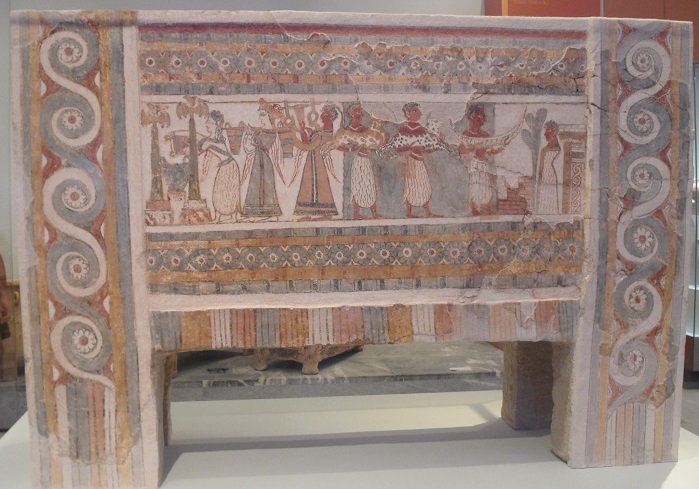
It’s Thor’s turn to weigh in on our Greek rambles. After all, he’s been my hero driver and beloved companion on many adventures!
NOTE: Of course, Thor and I had to make another trip to Greece, as he’s fallen as much in love with the islands as I am. This time, in addition to other island-hopping, I wanted to return to Crete after 37 years. My first months-long trip was as a hippie backpacker, camping in the ruins and falling under the spell of the mysterious, vanished Minoan culture. This time, I got to introduce Thor to “glorious Kriti” and research more settings for my novel-in-progress, THE ARIADNE DISCONNECT. This new blog series started October 19, 2019, and will continue every Saturday.
Take it away, Thor!
Sara invited me to contribute a blog post, a good exercise for my brain, which is getting stiff in retirement. My main function on these trips is driver and muscle. Drag a big-ass suitcase up three flights of stairs? I’m your man. Reach that little pull chain on the ceiling fan? I can do it. I enjoy the ancient ruins, especially the spectacular ones like the Parthenon:
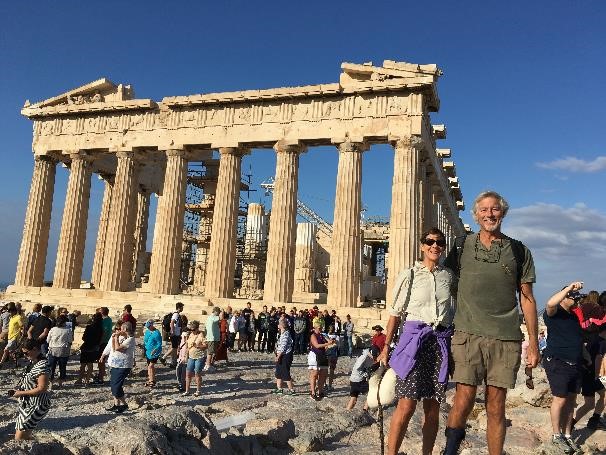
But let’s be honest, most ancient Greek ruins look something like this:
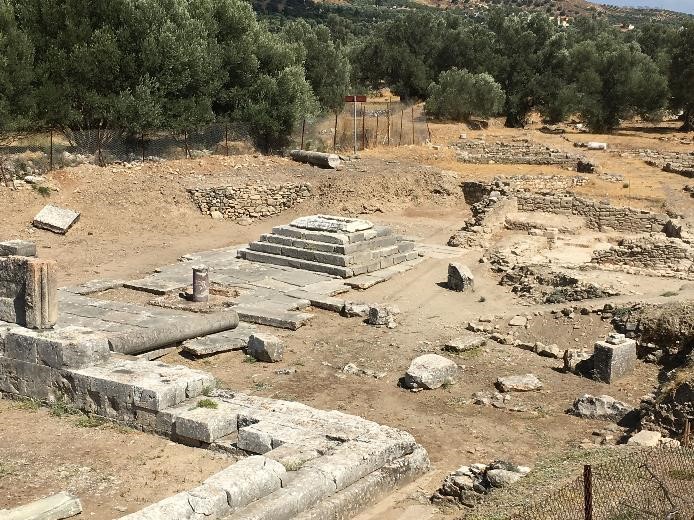
And that is a good one! You will see a road sign heralding “The Ancient Agora of Agatha” and you will turn off and pay your 3 euro admission fee and find… rocks, and a broken column or two. Sara of course is all over this, breathlessly reading the captions for the rocks and taking pictures. You cannot imagine how many kings you never heard of have walked across those very rocks. I have the patience of a saint and will wander over the rubble with her for a good ten minutes before I start to complain.
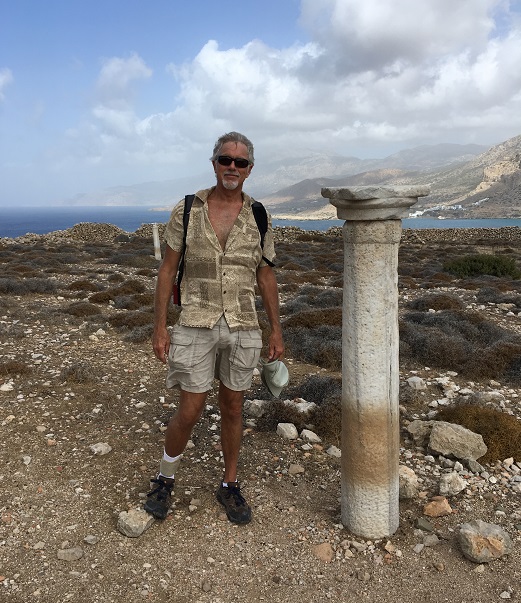
My preferences are for the beach, preferably nude ones, where we can swim in the hypnotically clear blue Aegean water, and enjoying Greek seafood with my lovely wife.

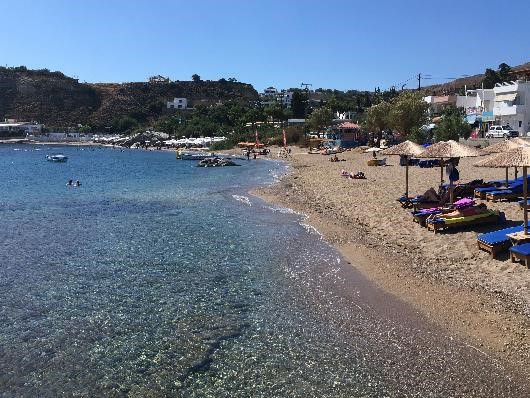
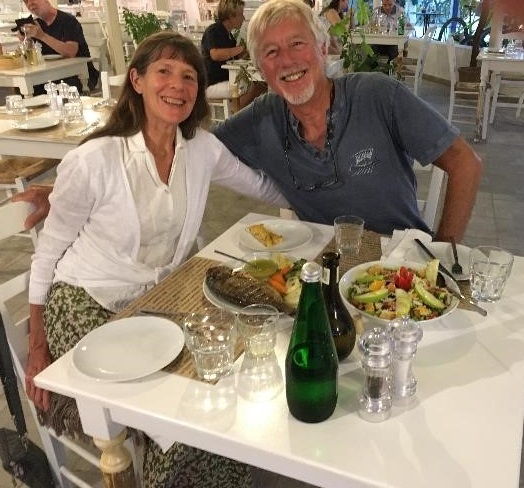
So you can imagine my surprise at encountering the Minoan civilization and absolutely falling in love with it. Most of the Minoan (or Keftiu) artifacts were unearthed by Arthur Evans at Knossos and there is some controversy about his interpretations. The Minoan written language (Linear A) has not been deciphered so the only sources of information about their culture are their wall paintings and artifacts. The frescoes were particularly fragmentary and required extensive reconstruction. Be that as it may, the paltry remains of the Minoans paint a portrait of a remarkable culture; one that really stands out from the rest of the Egyptian-Greek timeline. The first thing you notice is their love of nature, and to me, their oddly modern-looking style of carving and painting. Take these artifacts and frescoes from the museums at Heraklion and Akrotiri:
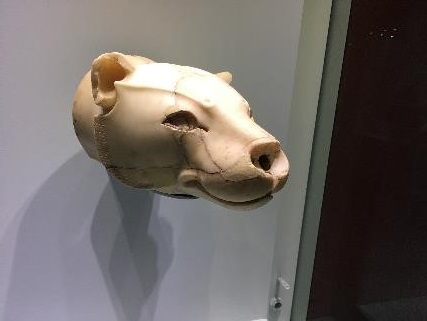
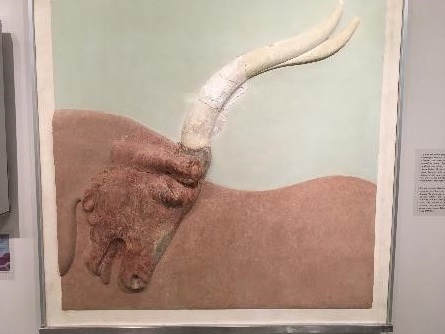
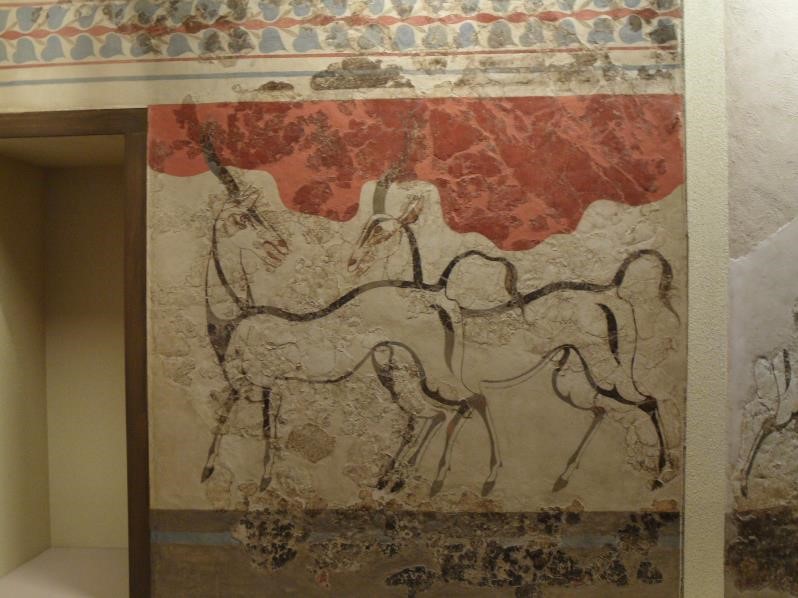
The next thing that jumps out at you is the lack of martial, war-making themes and the predominance of women in the art. Here is a good example from Knossos:
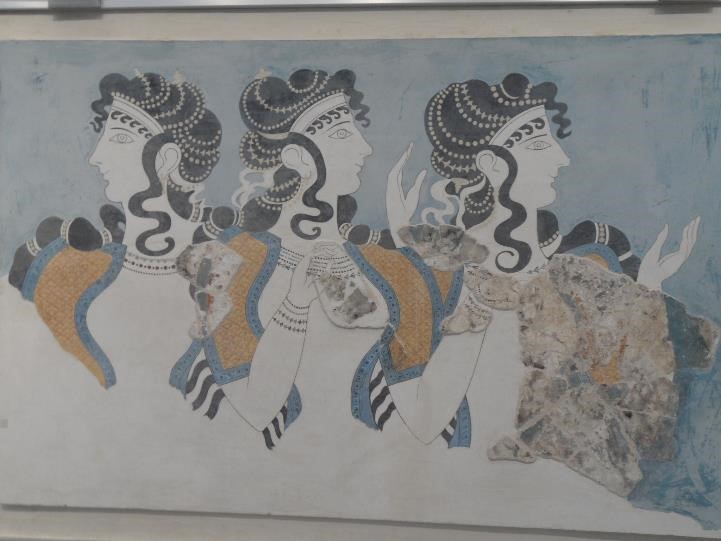
In this fresco there are plenty of males, but they are serving an obviously important female.
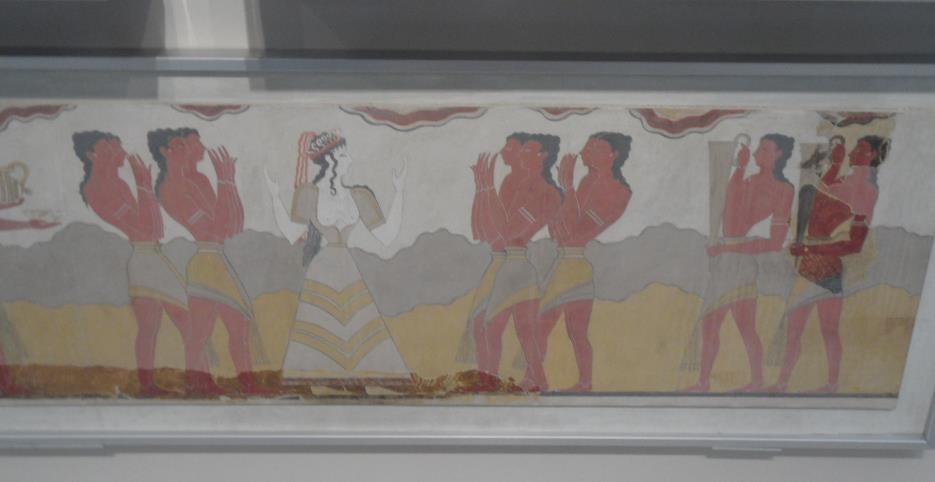
Note that the males are colored red or brown and the females are white. This is a pattern seen in Egyptian and ancient Greek art and is generally (though not always) followed in the Minoan frescoes. A common explanation is that the men worked outside and the women stayed indoors. Mary Eaverly, an Associate Professor of Classics at the University of Florida, Gainesville, suggests the color distinction represents a deeper existential difference (“symbolizing reconcilable opposites”).
Overall the frescoes convey a feeling of peace and plenty. One of my favorites is the “Grandstand Fresco” part of which is seen below. It seems to represent some kind of procession.
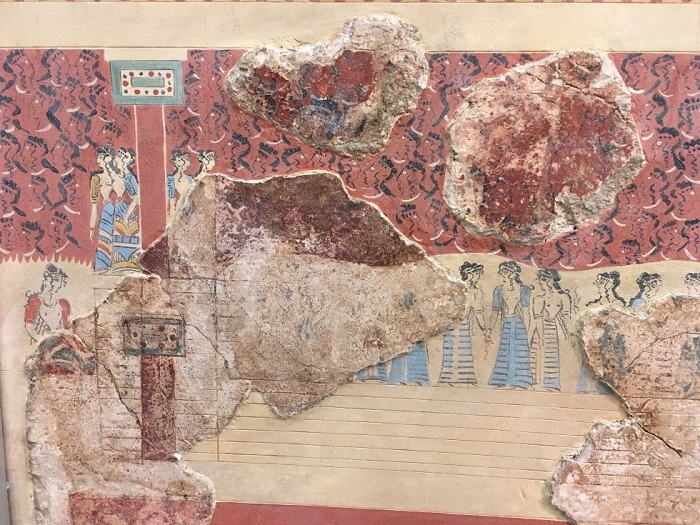
There are many faces in the crowd, but all of the figures shown in detail are female. Some are sitting and chatting, some are standing in rows or on raised pedestals. They all seem to be having a wonderful time. I particularly like this scene below where a group of women are chatting under an olive tree. They seem so lively and happy, and it looks so “normal”. This is a scene that is 4000 years old yet it looks like the women yakking at the last family reunion, albeit with more décolletage. Notice that nearly all the women in these frescos have open bodices, or bare exposed breasts.
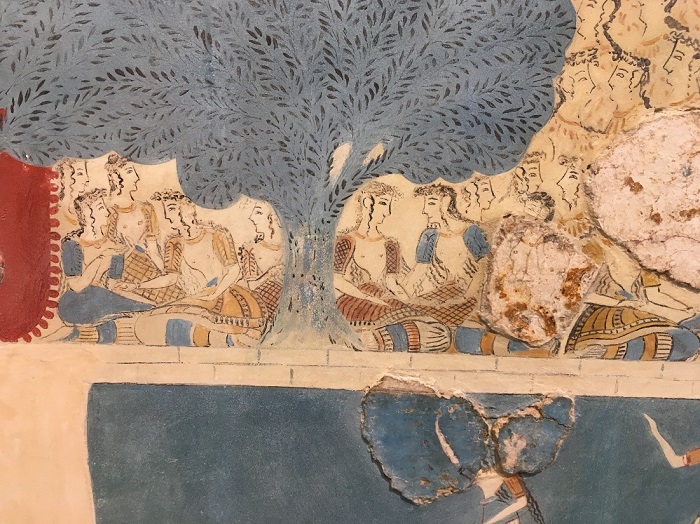
The predominance of women in these frescos and their obvious importance has made some scholars suggest that the Minoan society was matriarchal or that gender roles were more equal than in most cultures. Relevant to this I noticed the Minoan artifacts display a conspicuous lack of penises, a subject in which I have a personal interest. In Classical Greek culture penises abound. Take this sample of phalli from Delos:
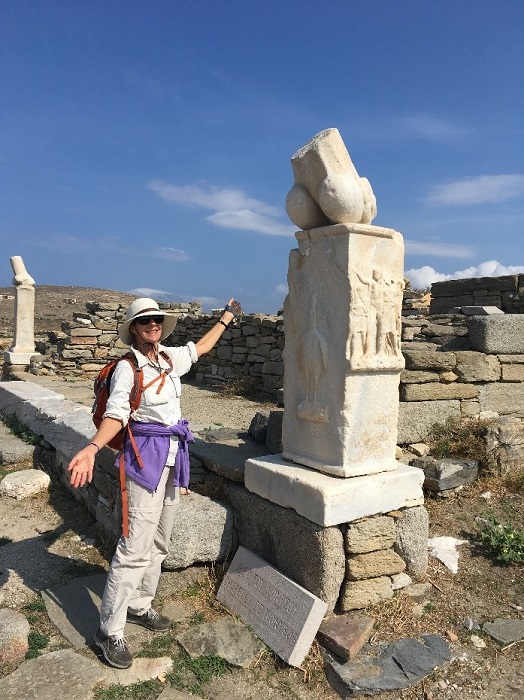
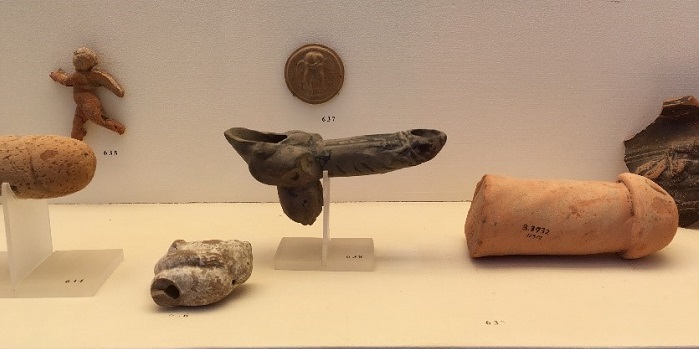
So I scoured the collection at the Heraklion museum, the greatest collection of Minoan artifacts in the world, and nary a penis raised its head. Instead you find artifacts like these female goddesses (don’t you love the little bobble feet?):
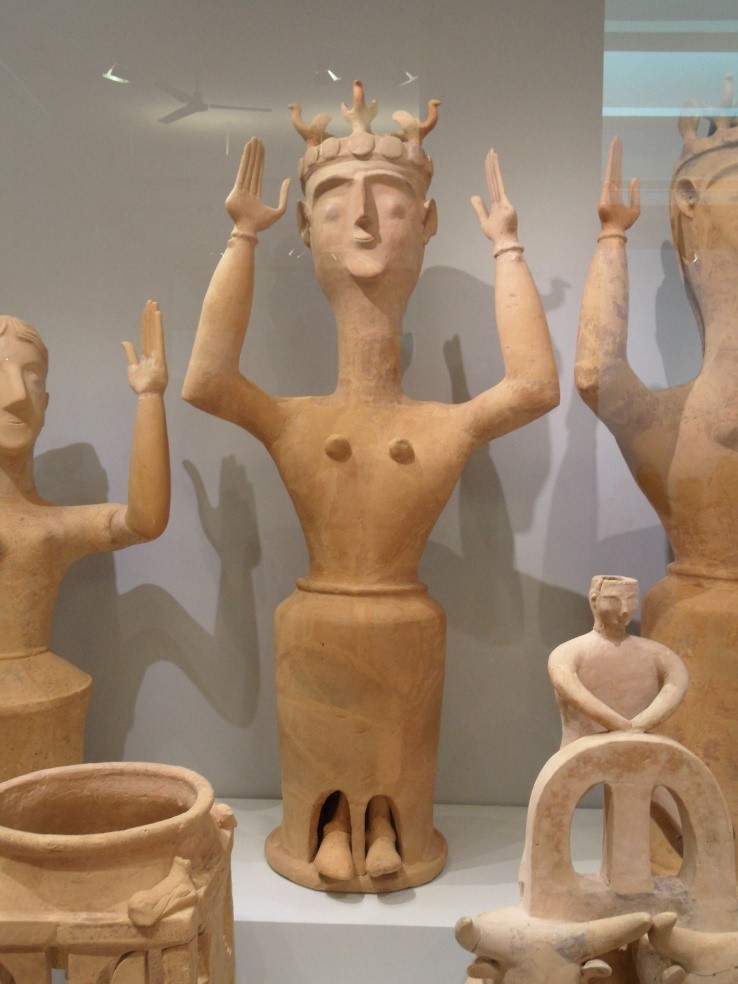
And this collection with a female worshipper, a pregnant female above, and a cool rhyton with a face. Clearly breasts carried more clout in this culture than penises.
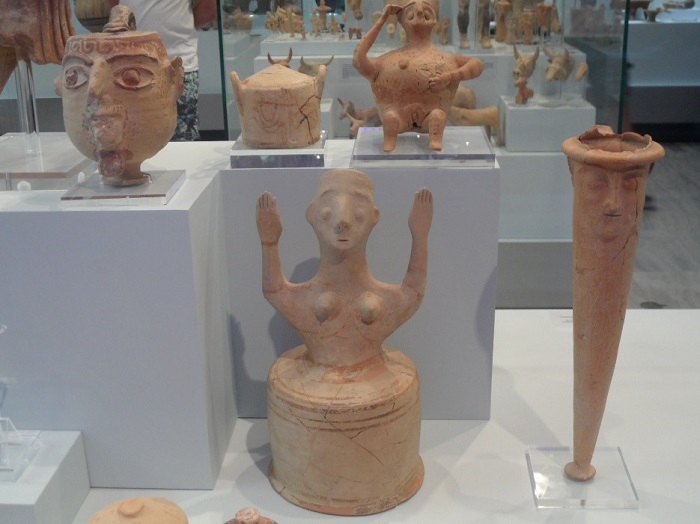
Anyway, it’s time for me to find a beach, so I will leave you with another Minoan fresco, found at Akrotiri on Thera:
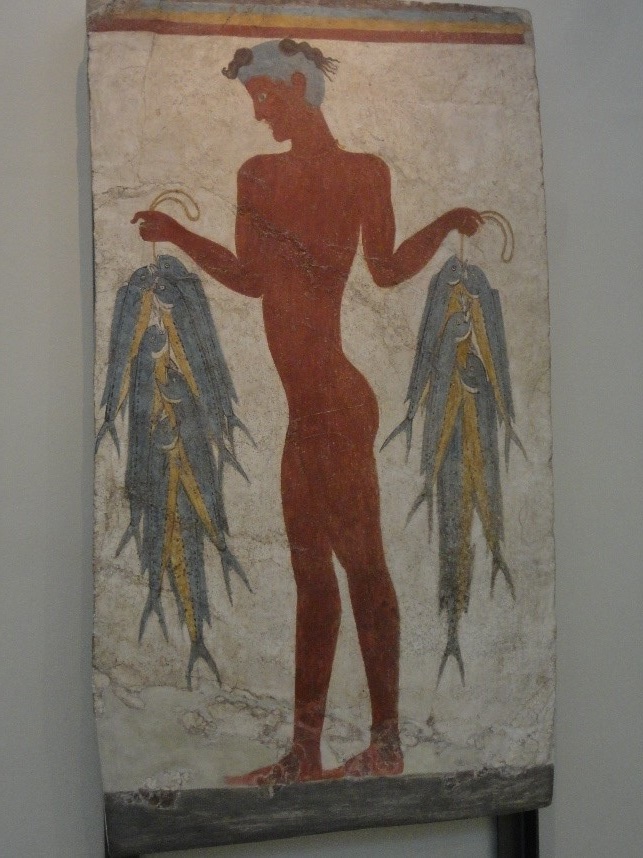
*****
You will find The Rambling Writer’s blog posts here every Saturday. Sara’s latest novel from Book View Cafe is available in print and ebook: The Ariadne Connection. It’s a near-future thriller set in the Greek islands. “Technology triggers a deadly new plague. Can a healer find the cure?” The novel has received the Chanticleer Global Thriller Grand Prize and the Cygnus Award for Speculative Fiction. Sara has recently returned from another research trip in Greece and is back at work on the sequel, The Ariadne Disconnect. Sign up for her quarterly email newsletter at www.sarastamey.com

1 thought on “The Rambling Writer Returns to Crete, part 15: Thor’s Take on the Minoans”